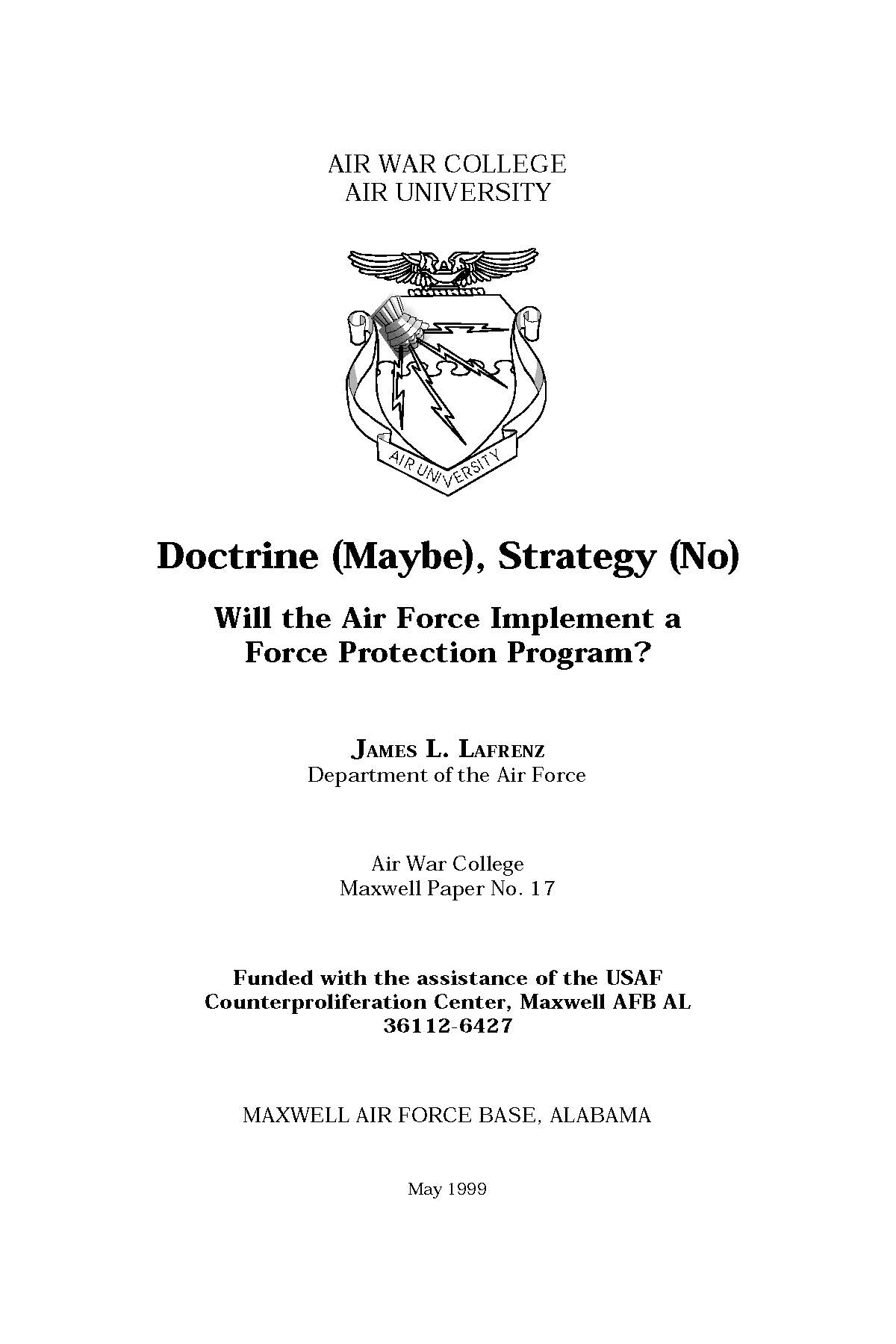 The US Air Force’s response to the bombing of Khobar Towers in June 1996 was to consolidate and remove our forces to a more isolated (bare base) location in the Saudi desert. While a seemingly logical step, removing our forces from Saudi population areas means that determined future terrorists could employ weapons against US forces without the worry of collateral damage to Saudi nationals. There are many other questions that need answering about our organizational preparedness for a chemical or biological event. For example, in the event of such an attack, is the US civil engineering force trained and equipped for the decontamination of the attacked base and other bases? Does Air Force doctrine include recovery of a base from a chemical attack, or will we evacuate to a new toxic-free area and leave the attacked base and its resources behind? Are our airmen protected from building collapse? These kinds of questions prompt larger issues. In this study Mr. James Lafrenz, a civil engineer in t he Department of the Air Force, notes that American global security policy requires expedient responses to war, t o natural disasters, and to problems between these two extremes. The Air Force owns the assets to make these responses, but our response forces are "concrete dependent"— airplanes need hard-surfaced runways from which to operate. And where there is concrete, there are usually buildings.
The US Air Force’s response to the bombing of Khobar Towers in June 1996 was to consolidate and remove our forces to a more isolated (bare base) location in the Saudi desert. While a seemingly logical step, removing our forces from Saudi population areas means that determined future terrorists could employ weapons against US forces without the worry of collateral damage to Saudi nationals. There are many other questions that need answering about our organizational preparedness for a chemical or biological event. For example, in the event of such an attack, is the US civil engineering force trained and equipped for the decontamination of the attacked base and other bases? Does Air Force doctrine include recovery of a base from a chemical attack, or will we evacuate to a new toxic-free area and leave the attacked base and its resources behind? Are our airmen protected from building collapse? These kinds of questions prompt larger issues. In this study Mr. James Lafrenz, a civil engineer in t he Department of the Air Force, notes that American global security policy requires expedient responses to war, t o natural disasters, and to problems between these two extremes. The Air Force owns the assets to make these responses, but our response forces are "concrete dependent"— airplanes need hard-surfaced runways from which to operate. And where there is concrete, there are usually buildings.
Author(s) • James L. Lafrenz
Year • 1999
Pages • 30
ISSN • 2575-7539
AU Press Code • MP-17